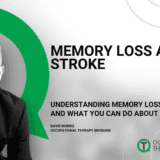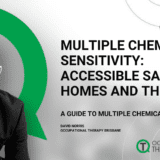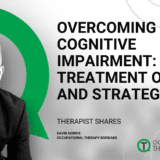Virtual Reality For Stroke Rehabilitation
Virtual reality seems to be everywhere these days, most often being used as a way to demonstrate products and to play video games. You’re also likely to see more virtual reality in therapy plans for Brisbane patients’ stroke rehabilitation and recovery.
Virtual Reality For Stroke Rehabilitation: What the studies are saying
One study involving 19 trials and 565 participants measured the effects of virtual reality for stroke rehabilitation in comparison to alternative or no stroke recovery intervention. Researchers found that virtual reality had a statistically significant effect on arm function. They also admitted that more randomised controlled trials were required to prove the benefits of virtual reality, which programs should be used, and which patients are more likely to benefit from it at different points of their stroke rehabilitation.
A later study by Cochrane involving over 1000 stroke sufferers found that interactive video game playing and virtual reality was helpful in improving upper limb function. There was also evidence that virtual reality could improve activities of daily living (ADL) functions like walking as well as global motor functions.
In both studies, few stroke rehabilitation participants reported headaches, dizziness and pain. No serious adverse events were reported.
Stroke rehabilitation therapy critical for successful recovery.
The National Stroke Association estimates that
- 10% of stroke patients recover almost completely,
- 25% of patients recover with minor impairments in language, motor skills, sensory skills and cognition, and
- 40% have moderate to significant impairments which require specialised care.
- Of the remainder, 10% require long-term care in a facility.
Stroke rehabilitation in Brisbane begins in the hospital, sometimes as soon as two days after a stroke has occurred. Depending on the severity of a stroke, patients should continue this therapy through:
- Home therapy
- Outpatient therapy
- Rehabilitation unit with inpatient therapy
- A long-term care facility
Continued therapy is essential for patients and their families for months and even years after a stroke. Through continued therapy, individuals learn what steps to take to enhance the rehabilitative process, and they are provided with the best tools and strategies for long-term stroke recovery.
Rehab To Reduce The Life Impact Of Stroke
Stroke is one of the leading causes of disability in Australia so it is with big importance that a person gets access to rehabilitation and in the early, middle and long term after stroke.
The goal of stroke rehabilitation therapy commonly will pivot around a few things
Successful stroke recovery depends on a variety of factors, including:
- How soon recovery and rehabilitation is started
- How much damage the stroke caused
- A patient’s age
- How motivated a patient is to recover
- Other medical issues that can affect recovery
- The level of skill the medical experts treating a patient have
Stroke rehabilitation therapy plans need to be tailored to meet the unique needs and abilities of and importantly the goals of the patient. The long-term goal of each plan is to help the individual become as independent as possible.
Start your treatment plan with Occupational Therapy Brisbane
Recovering from a stroke can be frustrating, confusing and complex. It’s no doubt important to find a therapist who will treat patients with the dignity and respect they deserve.
Occupational Therapy Brisbane is proud of our team of experienced stroke recovery and rehabilitation therapists. We assess, plan and deliver stroke recovery plans to patients in Brisbane and surrounding communities based on their own unique set of goals and your priorities.
We offer free stroke rehabilitation and recovery enquiry calls so that you can see if this is a good fit for you or your loved one, and invite you to call us today on 1300 783 200.
Sources
- VR For Stroke Rehabilitation
- Cochrane article: VR and stroke rehabilitation
- Facts and figures about stroke
- Stroke Rehabilitation Information










